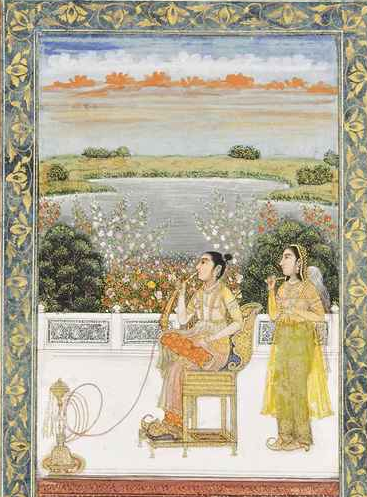Week 3: Middlemen and Middlewomen
Gender was an important factor determining the roles available to early modern actors and the spaces which they could access. This week we think about the respective roles and experiences of male and female intermediaries by focusing on a number of women go-betweens. Based on the writings and life stories of a Venetian convert in Istanbul, a Central Asian princess in India, and an English noblewoman in the Ottoman Empire, we will discuss issues of agency, representation, and experiences of boundary-crossings in the early modern world. LINK.
Required Readings
Eric R. Dursteler, ‘Fatima Hatun née Beatrice Michiel: Renegade Women in the Early Modern Mediterranean’, The Medieval History Journal 12.2 (2009): 355-382. Link.
Jyotsna Singh, ‘Boundary Crossings in the Islamic World: Princess Gulbadan as Traveler, Biographer, and Witness to History, 1523-1603’, Early Modern Women 7 (2012): 231-240. Link.
Primary Sources (select one)
Lady Mary Wortley Montagu, Theresa Heffernan and Daniel O’Quinn (eds.), The Turkish Embassy Letters (London: Broadview press, 2012), pp. 16-30 (Introduction), 100-103 (Letter 27); 112-116 (Letter 30); 130-135 (Letter 34). Link and
Gulbadan Begam, Anette S. Beveridge (ed.), The History of Humāyūn (Humāyūn-Nāma) (London: Royal Asiatic Society, 1902), pp. 82-105. Link.
Seminar Questions
- In what ways does Fatima Hatun’s story shed light on the nature of Mediterranean boundaries?
- What roles did gender play in shaping Beatrice/Fatima and Gazanfer's ability to mediate?
- Which boundary crossings did Gulbadan Begam practice and how did she act as a go-between?
- How does the 'Humayun Nama' bear testimony to wider border crossings?
- What type of go-betweens appear in Lady Mary Montagu's Letters?
- Compare the perspectives on female spaces derived from Gulbadan Begam, Fatima Hatun, and Lady Mary Montagu's accounts: what are the differences and similarities?
- In what ways do the cases of Gulbadan Begam, Fatima Hatun, and Lady Mary Montagu help recover underrepresented experiences?
Further Reading
Cave, Scott, 'Madalena: The Entangled History of One Indigenous Floridan Woman in the Atlantic World', The Americas 74.2 (2017): 171-200.
Colley, Linda, The Ordeal of Elizabeth Marsh: A Woman in World History (London: Harper Press, 2007).
Davis, Natalie Zemon, Women on the Margins: Three Seventeenth-Century Lives (Cambridge MA: Harvard University Press, 1995).
Dursteler, Eric R., Renegade Women: Gender, Identity, and Boundaries in the Early Modern Mediterranean (Baltimore: Johns Hopkins University Press, 2011).
Gil-Harris, Jonathan, The First Firangis: Remarkable Stories of Heroes, Healers, Charlatans, Courtesans & Other Foreigners Who Became Indian (Delhi: Aleph Book Company, 2015).
Graf, Tobias P., The Sultan’s Renegades: Christian-European Converts to Islam and the Making of the Ottoman Elite, 1575-1610 (Oxford: Oxford University Press, 2017).
Grundy, Isobel, Lady Mary Wortley Montagu (Oxford: Oxford University Press, 1999).
Lal, Ruby, Domesticity and Power in the Early Mughal World (Cambridge: Cambridge University Press, 2005).
Lal, Ruby, ‘Rethinking Mughal India: Challenge of a Princess’ Memoir’, Economic and Political Weekly 38.1 (2003), 53-65.
Melman, Billie, Women's Orients: English Women and the Middle East, 1718-1918 (Ann Arbor: University of Michigan Press, 1992).
Peirce, Leslie, Empress of the East: How a Slave Girl Became Queen of the Ottoman Empire (New York: Basic Books, 2017).
Peirce, Leslie, The Imperial Harem: Women and Sovereignty in the Ottoman Empire (Oxford: Oxford University Press, 1993).
Powers, Karen Vieira, 'Conquering Discourses of "Sexual Conquest": Of Women, Language, and Mestizaje', Colonial Latin American Review 11.1 (2002), pp. 7-32.
Rediker, Marcus, and Peter Linebaugh, The Many-Headed Hydra: Sailors, Slaves, Commoners, and the Hidden History of the Revolutionary Atlantic (Boston, MA: Beacon Press, 2000), Ch. 3: ‘“A Blackymore Maide Named Francis”’, pp. 71-103.
Rothman, Natalie, ‘Conversion and Convergence in the Venetian-Ottoman Borderlands’, Journal of Medieval and Early Modern Studies 41.3 (2011): 601-633.
Rothman, Natalie, Brokering Empire: Trans-Imperial Subjects between Venice and Istanbul (Ithaca and London: Cornell University Press, 2012).
Scully, Pamela, 'Malintzin, Pocahontas, and Krotoa: Indigenous Women and Myth Models of the Atlantic World', Journal of Colonialism and Colonial History 6.3 (2005).
Sen, Amrita, ‘Traveling Companions: Women, Trade, and the Early East India Company’, Genre: Forms of Discourse and Culture 48.2 (2015): 193-214.
Thornton, John K., The Kongolese Saint Anthony: Dona Beatriz Kimpa Vita and the Antonian Movement, 1684-1706 (Cambridge: Cambridge University Press, 1998).
Zaman, Taymiya R., 'Visions of Juliana: A Portuguese Woman at the Court of the Mughals', Journal of World History 23.4 (2012), pp. 761-791.

